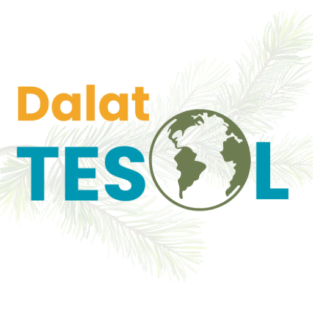By Dalat TESOL
Supporting new researchers in producing clear, transparent, and publishable research
📌 Introduction
The Method section is often overlooked — seen as “just describing what you did.” But in reality, it’s one of the most important parts of your thesis or paper. Why?
Because it shows whether your study is trustworthy, replicable, and appropriate for your research questions.
A weak method section can make a strong study look careless. A clear, well-structured one builds your credibility as a researcher — especially for graduate students writing in TESOL, Applied Linguistics, or Education.
This article will guide you through what to include, how to write it clearly, and how to justify your choices using TESOL-friendly examples.
🧭 Purpose of the Method Section
The Method section answers three core questions:
- What did you do? (Design, sampling, procedures)
- Why did you do it that way? (Justification, alignment with RQs)
- How can others evaluate or replicate it? (Transparency, ethics)
Whether you’re writing for a thesis or journal article, the structure is generally the same.
📑 Standard Structure of the Method Section
Here’s a commonly accepted structure for TESOL/applied linguistics research:
- Research Design
- Participants / Context
- Instruments / Data Collection Tools
- Data Collection Procedures
- Data Analysis
- Ethical Considerations (optional in some journals, but required in theses)
Let’s go through each.
1. 🧭 Research Design
Start by identifying and justifying your overall design.
Use clear terms (e.g., qualitative, quantitative, mixed-methods, case study, survey, experimental).
🔹 Example:
This study adopted a mixed-methods convergent design, combining a student survey with follow-up interviews. This approach allowed both breadth and depth in exploring EFL learners’ perceptions of AI-assisted writing.
✅ Tip: Always explain why this design suits your research questions.
2. 👥 Participants and Context
Describe:
- Who took part (teachers, students, etc.)
- How they were selected (purposive, convenience, random, etc.)
- Their background (age, proficiency level, program type)
- Where the study took place (school, university, online platform)
🔹 Example:
Participants were 76 second-year English-major students at a public university in Vietnam. Convenience sampling was used based on classroom access during the writing skills module.
✅ Use pseudonyms for institutions or individuals to protect privacy.
3. 🧰 Instruments / Data Collection Tools
Describe what you used to gather data:
- Surveys or questionnaires (include number of items, Likert scale type)
- Interview protocols (structured/semi-structured, how many questions)
- Observation checklists, test tasks, writing prompts, logs, etc.
🔹 Example:
The questionnaire included 22 items adapted from Dörnyei (2005), covering learner motivation and AI tool use frequency, rated on a 5-point Likert scale.
✅ Mention validation if you’re adapting or creating instruments. Cite sources if using established tools.
4. 🕰️ Data Collection Procedures
Detail the sequence and timeline of data collection:
- How did you contact participants?
- When and how were tools administered?
- Were data collected online or in person?
- How long did each step take?
🔹 Example:
The survey was administered via Google Forms after Week 4 of the semester. Semi-structured interviews were conducted one week later with 10 volunteers, each lasting 30–45 minutes.
✅ Include translation steps if using bilingual instruments or interviews.
5. 🧮 Data Analysis
Explain how you analyzed the data — and why you chose these methods.
For quantitative data:
- What statistical tests? (e.g., descriptive stats, t-test, correlation, regression)
- Software used (SPSS, JASP, R, etc.)
- How you ensured reliability (e.g., Cronbach’s alpha)
For qualitative data:
- How you coded (inductive, deductive, or hybrid)
- Thematic analysis, grounded theory, discourse analysis?
- What tools used (manual, NVivo, MAXQDA)
🔹 Example (Quant):
Descriptive statistics and Pearson correlation analysis were conducted using SPSS v26. Reliability of the motivation scale was acceptable (Cronbach’s α = .82).
🔹 Example (Qual):
Thematic analysis was used to analyze interview transcripts, following Braun and Clarke’s (2006) six-step procedure. Coding was performed inductively using MAXQDA.
✅ Link the analysis method clearly to your research questions.
6. 🛡️ Ethical Considerations
Briefly describe how you ensured:
- Informed consent
- Anonymity and confidentiality
- Right to withdraw
- Data protection
🔹 Example:
Ethical approval was granted by the university’s research committee. Participants signed consent forms and were informed of their right to withdraw at any time.
✍️ Style Tips for Writing the Method Section
| Do | Avoid |
|---|---|
| Use past tense (“The data were collected…”) | Switching tenses or passive voice inconsistently |
| Be precise and concise | Vague terms like “some students” or “various tools” |
| Justify all major choices | Listing methods without explaining why |
| Include enough detail for replication | Overly generic descriptions |
🧾 Sample Paragraph (Quantitative Survey Example)
This study employed a cross-sectional survey design to investigate the relationship between self-efficacy and ChatGPT use among EFL learners. The participants were 103 English majors from a university in Central Vietnam, selected via convenience sampling. A 25-item questionnaire adapted from Wang and Lin (2023) was used, covering AI use frequency, writing self-efficacy, and attitudes toward academic integrity. Items were rated on a 5-point Likert scale. Descriptive statistics, Cronbach’s alpha reliability, and Pearson correlation tests were performed in SPSS. The questionnaire was piloted with 10 students before full deployment. Informed consent was obtained prior to data collection.
🧠 Final Thoughts
The Method section is more than a technical requirement. It demonstrates:
- Your understanding of research design
- Your transparency and ethical rigor
- Your ability to justify what you’ve done — and why
📌 Golden Rule: Don’t assume your readers know what you did. Spell it out.
—
🌿 Dalat TESOL – Chia sẻ kiến thức giảng dạy, nghiên cứu khoa học và cơ hội xuất bản
